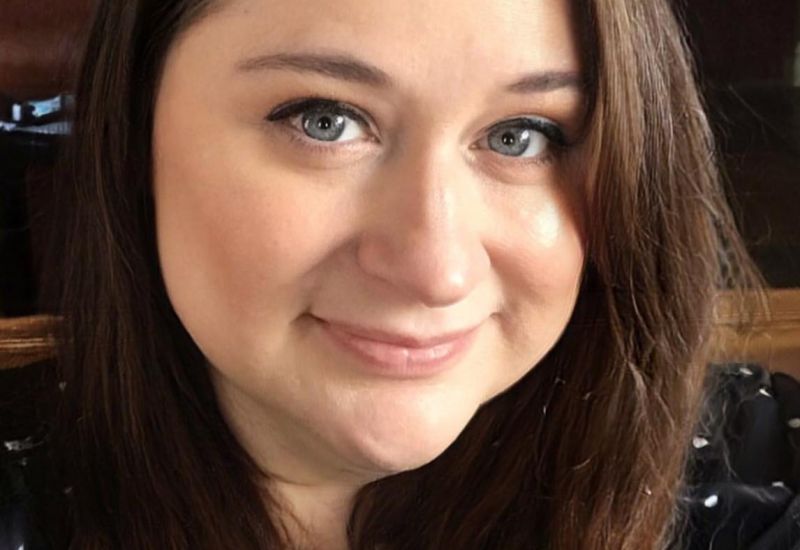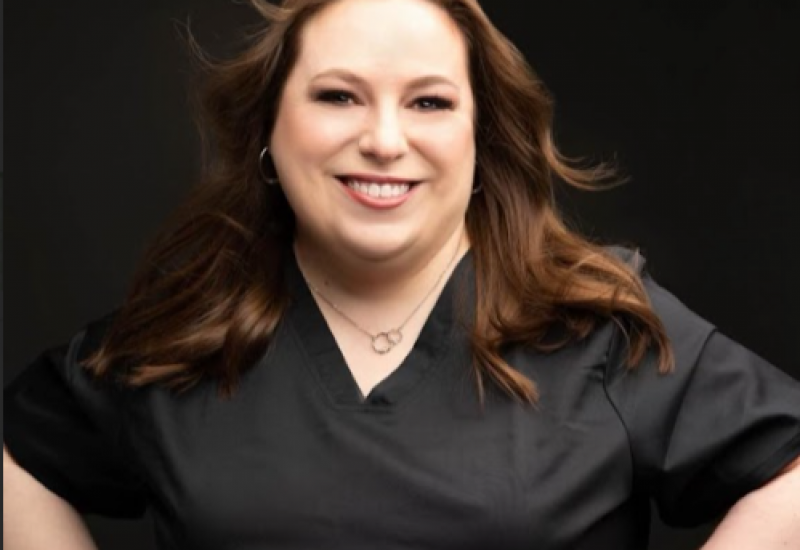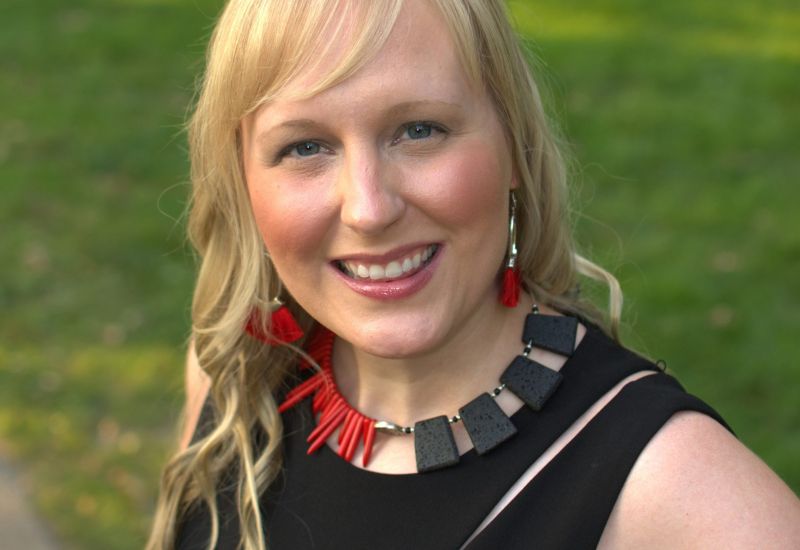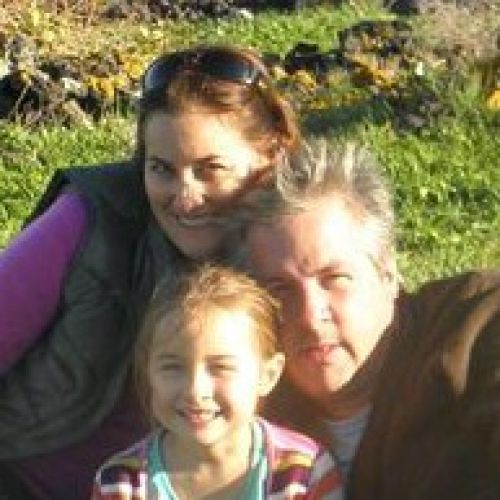Amy Burke, DC
I was asked over a year ago to write my “story” related to C. diff. I have avoided this task because it brings back many frightening and distressing memories. It is not so much my story as it is OUR story, for without my husband, Peter, and his acute ability to synthesize information and develop a plan, I would not be here to tell the story, and without our daughter, Lily, our story wouldn’t have happened.
I am a chiropractor who has specialized in pregnancy and care of infants and children. My training involved four years of pre-med studies and four years of chiropractic college. Our first set of chiropractic board exams includes sections on pathology, biochemistry, anatomy and physiology. My passion involves caring for pregnant women and guiding them to the best pregnancy and delivery possible through chiropractic care and education. The fact that my delivery was such an abject failure is a constant source of shame and resentment for me. I didn’t want to go back and revisit it, but I am compelled to do so knowing how many people are suffering from this infection and the effects of its mismanagement.
In April of 2006, in the 42nd week of my pregnancy, I was sent to the hospital for a routine series of non-invasive tests to ensure that there was sufficient fluid in the amniotic sac and to determine that the baby was fine. The tests confirmed that the baby was fine and also that the fluid levels were low. Not dangerously so, but low. We had been planning a home birth. Our birthing tub was ready, our midwife was awaiting our call, as was our doula. We were very comfortable with our birth plan, and were eager to meet our baby.
To make a long story shorter, we were instructed by the OB at the hospital to get labor going since the fluid levels were low. We used herbs, acupuncture, homeopathy, nipple stimulation, long walks, stairs, having sex, eggplant, okra, spicy food, castor oil, twice, our midwife stripped my membrane, whatever you have ever heard might bring on labor, we tried it. For two days.
On Sunday morning we headed to the hospital. I dreaded it with every fiber of my being. I wept in the car. My wonderful husband, Peter, was so perplexed. Why was I crying? “Because once we get there this will all be out of our hands and they are going to do a C-section.” I hadn’t taken a drug, even over the counter, in ten years. I didn’t want our birth to become a medical procedure it was my big fear.
Upon arrival they inserted an IV hook up in my arm, just in case. They brought in the anesthesiologist, just in case. And they administered Cervadil, a cervical softener that can be given a couple of times at twelve hour intervals. I began having contractions that were much stronger than I had had at home. Not long after, a nurse took my temperature and found that I had a fever. I was not surprised at all. I was in a place I didn’t want to be, being prodded and poked, and drugged, all things I had actively avoided for my adult life, including my entire pregnancy. A fever seemed like a VERY logical response by my body. Not so to the hospital medical staff. Within moments I was placed on three different IV antibiotics. Zithromax, Clindamycin, and Ampicillin. At that point I was hooked to the IV tower and had limited mobility, another thing I wanted to avoid. I remember asking if they could at least give me probiotics that were specific to the antibiotics that they were giving me. In Europe, if you fill a prescription for antibiotics, you are automatically given a probiotic. They do not do this in New York City.
Things progressed predictably. I couldn’t move much, I became dehydrated. They put me on pitocin, then, after four hours, insisted that I have an epidural so they could increase the level of pitocin. Since the pitocin creates contractions that are not natural, the body has no innate mechanisms to deal with that kind of pain or duration. They insisted that they needed to up the pitocin levels because I needed to have longer more sustained contractions in order to dilate properly, and that though I was progressing quite well without it, they were getting worried about the length of time that had passed. And then they tossed in “for the sake of the baby” and, of course, what do new parents say to that? “Whatever you say is best.” These were all conversations we had hoped to avoid by delivering at home where the only schedule that mattered was the baby’s.
At 2 AM they announced that they were calling the midwife’s back up doctor and he would be performing a C-section. A second epidural was administered. They also gave me shots of drugs to counter the pitocin, because now they didn’t want my uterus to contract, and drugs to counter my irregular heartbeat that was produced by the drugs. I emotionally and mentally checked out at the first epidural.
The good news is that our baby, a beautiful healthy baby girl, seemed unperturbed by all the drama and she was taken out of me just after 3 am. I had a horrendous case of chills and shakes that prevented me from being able to hold her. I was told it was a natural reaction to the medication. Then shortly thereafter the anesthesiologist came back in with a worried look and he pushed two bags of saline into my IV. Once I was rehydrated, the shakes and chills ceased.
Each morning the hospital staff was perplexed by the fever that was lingering despite all the drugs, antibiotics, and fever reducing agents. I tried to explain to them that it was because of the drugs. I was right, but I didn’t know how right I was until several days later.
I didn’t bother taking the stool softener they offered. My bowels were working just fine, it seemed. I certainly wasn’t constipated, if anything my stool was already softer than normal. This may have been the first signs of infection, I can’t be sure.
We came home from the hospital on Thursday. On Monday I awoke with a fever, diarrhea and a profound sense of dread. I remember thinking that I was going to die. I felt like I had the flu, but different. I was experiencing a shocking amount of very watery diarrhea. I didn’t even notice the smell at first.
I told Peter that I was worried I would have to return to the hospital and that this time they would succeed in finishing what they started, trying to kill me. I planned on being dead shortly. Peter told me I had probably eaten something prepared by a neighbor that wasn’t fully cooked, and was having a reaction to that. I called our midwife and told her what I was experiencing and she said she would be by later to take a stool sample. She had another mother with a similar birth history who had contracted C. diff, and she wanted to make sure that I didn’t have it. She asked me about the smell, and, though embarrassed, I had to admit that the diarrhea was accompanied by an absolutely hideous odor.
Peter got on the computer and within a short period had determined a course of action. He went to our local health food store and was back in an hour. He told me not to go on line. He was worried that if I saw the information I would lose hope. There are too many stories of new mothers who die of C. diff.
I did have C. diff (which had long been called antibiotic induced colitis). Our midwife counseled us very sternly to follow the recommended course of antibiotic treatment. She explained that her other client had refused to follow the antibiotic treatment and was still very ill six months later. She recommended Vancomycin because Flagyll is not to be used while breast feeding. Breast feeding. We had a 7 day old baby that I had to rip off my breast and put down every twenty minutes as I ran to the bathroom. My abdomen was healing from the major surgery one week earlier and now this. I was too sick to be furious. I was mostly sad. It wasn’t supposed to be this way.
What was most shocking was learning how rampant this infection is, how common it is, and how inept the medical system is at dealing with it, tracking it, or giving people warning about it. Remember in school when there was a lice outbreak, or chicken pox, or scabies, the teachers sent home a note to the parents detailing the situation, explaining the symptoms, and telling people what to look for and what to do if they noticed their child having any of the listed symptoms? They were informed.
Every person admitted to a hospital should receive a notice explaining the presence of C. diff on surfaces, and tell them what to look for, and who to contact if they begin to have symptoms. The INSTANT someone is given Clindamycin, C. diff. should be discussed as a probable collateral effect. No one at the hospital ever knew that I had contracted C. diff. By this alone I know that the numbers being reported are dramatically low. The lack of information provided by the hospital when the outcome is borderline predictable is egregious.
Peter, a chef by training, a researcher by passion and a natural remedies sage by demand, developed a very rigorous supplement plan, nutritional protocol to which he added one pharmaceutical, cholestyramine, which specifically pulls cholesterol away from the lining of the colon. He read about this drug in a study that showed how a Canadian Hospital addressed a C. diff outbreak. Since C. diff forms a membrane on the inside of the colon, Peter reasoned that this drug would pull the membrane away, too. It did. I used the cholestyramine for about 10 days. I took about 5 Oregamax (available at most health food stores) capsules 5 times daily. Wild oregano is a POWERFUL antibiotic that obliterates both gram positive and gram negative bacteria and is antiviral and antifungal. Oregamax also has very high levels of calcium phosphorus, magnesium, cooper, and zinc, minerals that were all being depleted and it appeared to be a more logical antibiotic formula that C. diff could not nullify. I took loads of probiotics, mostly lactobacilli and acidophilis, found at our health food store (these particular ones ended up not being of great help). I drank Metagenics anti-inflammatory shakes, loaded with turmeric and Omega 3 oils twice daily. I ate gentle congees of rice, barley, with flax seeds mixed in, sometimes with a little ground turkey mixed in. I drank as much Glaceau Smart water mixed with liquid chlorophyll as I could to replace the electrolytes that were being eliminated with alarming speed by the C. diff. The magnesium molecule at the core of the chlorophyll helped replenish that which was rapidly being depleted through the diarrhea. I ate because I had to. I had to nourish myself so that I could feed our baby. I had little will to eat and little strength. I was unable to really leave the house because of the unpredictable rounds of explosive diarrhea.
Peter continued to research other things we could do or add to our program. We began using hydrogen peroxide to clean the house, and the bathroom in particular. Hydrogen peroxide kills C. diff spores. We were both committed to staying away from the antibiotics as a form of treatment. It didn’t take a genius to figure out that antibiotic induced colitis can’t be effectively eliminated with antibiotics. In fact, the more we read about C. Diff, the more we heard about people who were on a constant roller coaster of acute illness, antibiotics, remission and start again six weeks later. They would take the course of Flagyll or Vancomycin, end the course, feel better, and then the new hatch would occur and they would feel sick again, and have to begin another course of antibiotics. This is no way to live. I felt OK about ten days into our protocol. Not good. Definitely not well. But not horrible. Then Peter came across a lone reference to C. diff in AIDS patients and the use of a probiotic called saccheromyces boulardii.
The day I began the saccheromyces boulardii I knew that I was going to live, I knew that I was going to be really fine. I didn’t know how long it would take, but I knew I would eventually get there. We used Jarrow Formulas Saccheromyces Boulardii + MOS. Most probiotics, we learned, don’t ever make it to the colon. They don’t weather the acidity of the stomach. Saccheromyces boulardii is specific to the colon. It may be exactly what was wiped out in my large intestine between the two rounds of castor oil to induce labor and the Clindamycin, an antibiotic that has been absolutely linked to C. diff. Saccheromyces is a yeast, not a bacteria. It made a huge difference in my mood, in the frequency of bouts of diarrhea and in my overall energy.
A couple of days later we had an appointment to see an MD associated with Beth Israel Hospital who also had a background in homeopathy. He had seen our midwife’s other client, and was becoming an accidental alternative expert on C. diff. He listened to our protocol and was impressed. He shook our hands, commended Peter on his research and wisdom and then handed me his card with his email address. “When you need the antibiotics, just shoot me an email. You don’t even have to come in.” I explained that I had turned the corner and that I really felt like it was over. He smiled and said, this is going to be a war that will last months, if not years. I am happy you feel better today, but you will need to take the antibiotics eventually.” I don’t remember his name, surely he doesn’t remember mine. He was wrong. And I knew it then.
As a symbol of protest I threw his card in a trash can outside the dreary building on W. 15th Street. What is most unfortunate is that he never bothered to write down what we did, the protocol that Peter developed and he never found out that I didn’t eventually need the drugs. He is probably still telling C. diff sufferers to use the standard anti-diarrhea homeopathic remedy, rendered useless by the accompanying prescription for Vancomycin, thereby initiating a long drawn out war between bug and drug, in the battleground of a damaged colon. It doesn’t have to be this way.
A couple of years ago Peter got a staph infection behind his ear. They didn’t know what it was and put him on IV Clindamycin in the ER. When I expressed my concern about the possibility of C. diff, the attending physician marched in and asked me what my background was. I explained that I had contracted C. diff when our daughter was born. He looked at me and said, “then you know you should eat lots of yogurt. That is great.” I wanted to strangle him. People die from this, it is a nosocomial infection, meaning, it is because we are at the hospital that we are now vulnerable to this bug, and you want him to eat YOGURT! Yogurt will do nothing. It has to be saccheromyces boulardii, not bifidus or bacillis, along with a LOT of other supplements. The ignorance is astounding.
It has been over five years since I contracted C. diff during my hospital stay. I was in the hospital for the birth of our child, and as our parting gift, along with the formula we left on the bedside, I was also taking home a potentially fatal intestinal bacteria. I have avoided writing our story because it is a reminder of how scary that time was. Rather than it being a time of joy and celebration, I perceive it as a period of weakness and failure, but I think that is partially the bug that does that. It sucks the life force, and hope from you. The good news is that it all turned out okay. For us.
I hope that our story will help others to believe in the power of natural health care options and to trust in their own intuition. Not enough is known about this infection, and I commend the Peggy Lillis Foundation for its ardent efforts to improve information and knowledge about C. diff and its potentially devastating effects.
Age
N/A
Gender
Female
Length
Source
Hospital Acquired
Other Stories

Mira

Beth W.

Mollie Lauck

Ken Fredrickson

Jan

Dr. Melissa Geraghty, Psy.D.

Cassie Padilla

Julia

Sue

